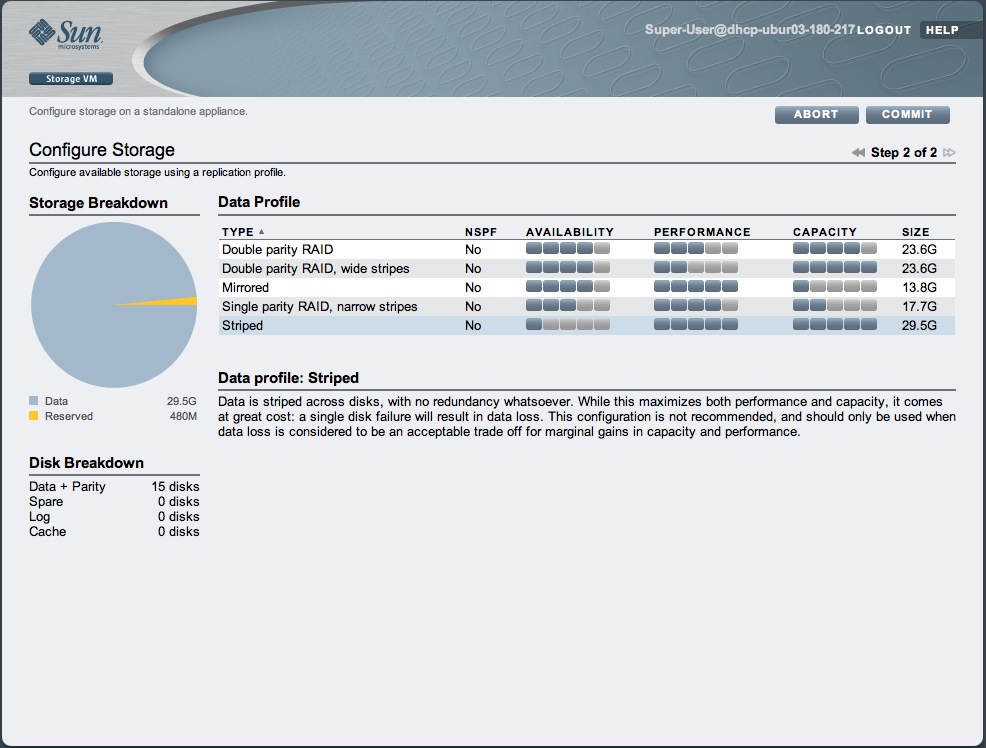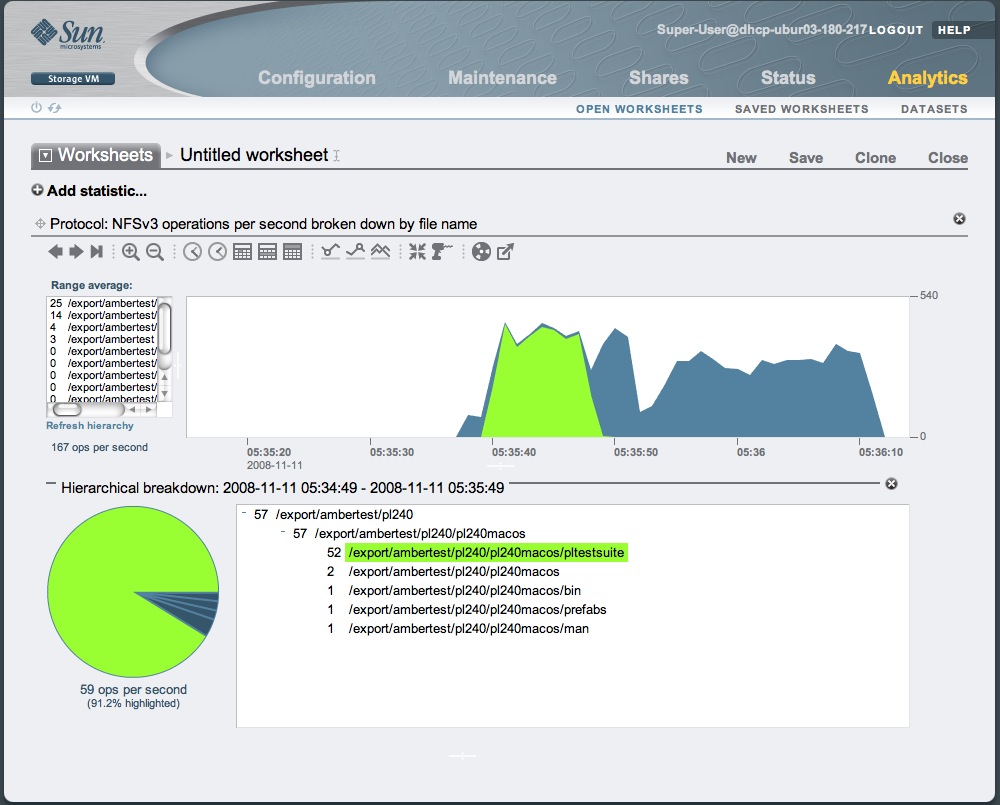Big launch day for Sun on Monday as they announced their Unified Storage range. Head on over to the Sun Storage 7000 Unified Storage System home page to find out more.
This is really, really slick technology. A normal web interface to your storage, commodity disks, leveraging ZFS and SSD storage to get the performance you need – plus it’s running Solaris, which means not only is it totally open, but you can also get the sort of performance metrics you always dreamed of.
Trying to get performance data from any vendor has always been a painful exercise – either they flatly refused to do it (“Just buy more cache!”) or else you had to pay a truly extortionate amount to get their performance software.
With Sun’s USS systems you can just unleash Dtrace. The same tools you’re using to manage and profile your servers can now be used on your storage.
Check out this screenshot:
The best part is, you don’t even have to buy one of these appliances to have a play. Yes, you can take part in the 60 day “Try before Buy” scheme. Even better than that, though, is that Sun have a freely available VMware image for download.
Just copy it down, boot through VMware, and start playing with your own storage appliance.
You can download the storage simulator from here, and I highly recommend everyone has a look – this is another really disruptive technology from Sun that SMEs are really going to love.
It’s a common complaint, and it’s a very valid one. No one could ever accuse the Solaris installation process of being speedy. Even with all the CD swapping,the IRIX install is faster – and that’s saying something.
Each time the Solaris package installer, pkgadd, adds a new package, it rewrites the entire contents of /var/sadm/install/contents – in order. This is how the package manager keeps track of the package manifest, and this is a design flaw going way back to the days when AT&T and Sun came up with the idea of SVR4 UNIX. They just didn’t plan for over 10,000 files spread across over 1,000 packages, which is what a normal install of Solaris slaps down.
A potential solution that was floated for Solaris 10 was to use SQLite to handle the package database, but that uncovered another problem – performance tanked even further on small memory systems.
The real solution? Stop using flat files – but that’s an architecture decision that has lots of consequences for backwards compatibility. OpenSolaris is addressing this with an entirely new package management system. So far it’s looking pretty slick.
In the meantime – what to do? Install from flash archives – flars – and preferably via Wanboot. I’ll be blogging more about those two technologies shortly, but they can have a hugely beneficial impact on your Solaris estate.
I’ve just published a (brief) account of the history of Sun Microsystems. Yes, a big part of my business revolves around Sun, Solaris, and related technologies – but the reason I got involved in the first place is because Sun itself is such an interesting company.
Have a read of The History of Sun Microsystems and let me know what you think.
Back in 2005 when Sun released the Niagara chip – the UltraSPARC T1 – they also took the unusual step of open sourcing the hardware design of the CPU. Having a ground breaking 8 core, 32 thread CPU was impressive enough, but sharing the internals with anyone who was interested – awesome!
Recently Sun have announced a partnership with Europractice, who are a pan-European group setup to promote student learning of chip design across Europe. It follows on from the successful Eurochip organisation which had similar aims.
With Europractice, Sun are making CPU design details, chip architecture documentation, and FPGA tools available to Universities across Europe. As part of that, Sun are hosting two one day events in London at the beginning of December to spill the beans on all aspects of the OpenSPARC design, as well as some history of the SPARC family.
Sadly this is only open to Europractice members from academic institutions, but Sun have continued their theme of openness by making all the slides and documentation available via their web site.
You’ll need a (free) Sun site login, but head on over to https://wikis.sun.com/display/OpenSPARC/Slidecast+-+All+About+OpenSPARC and download over 5 hours of slides, complete with voice overs and designer notes.


